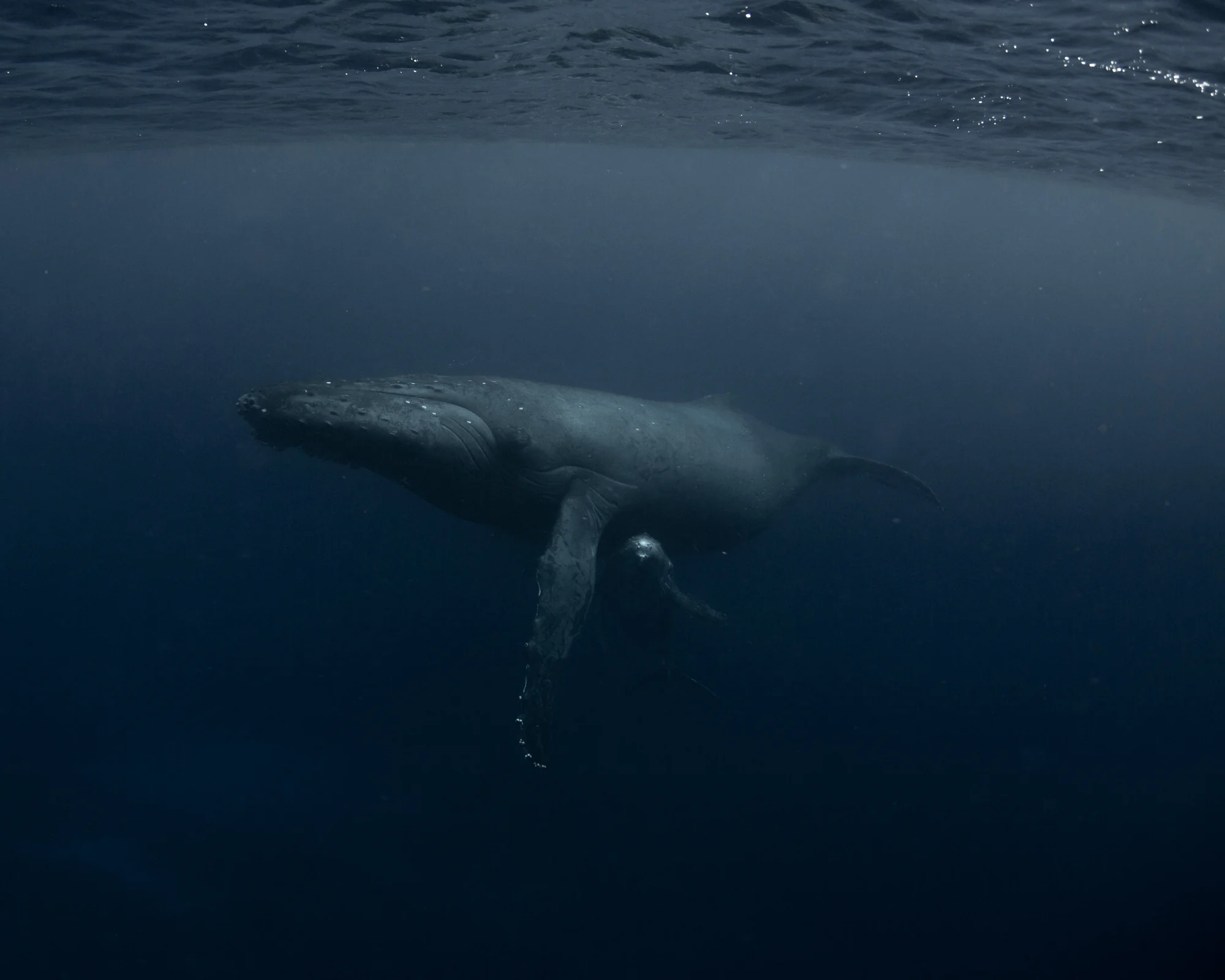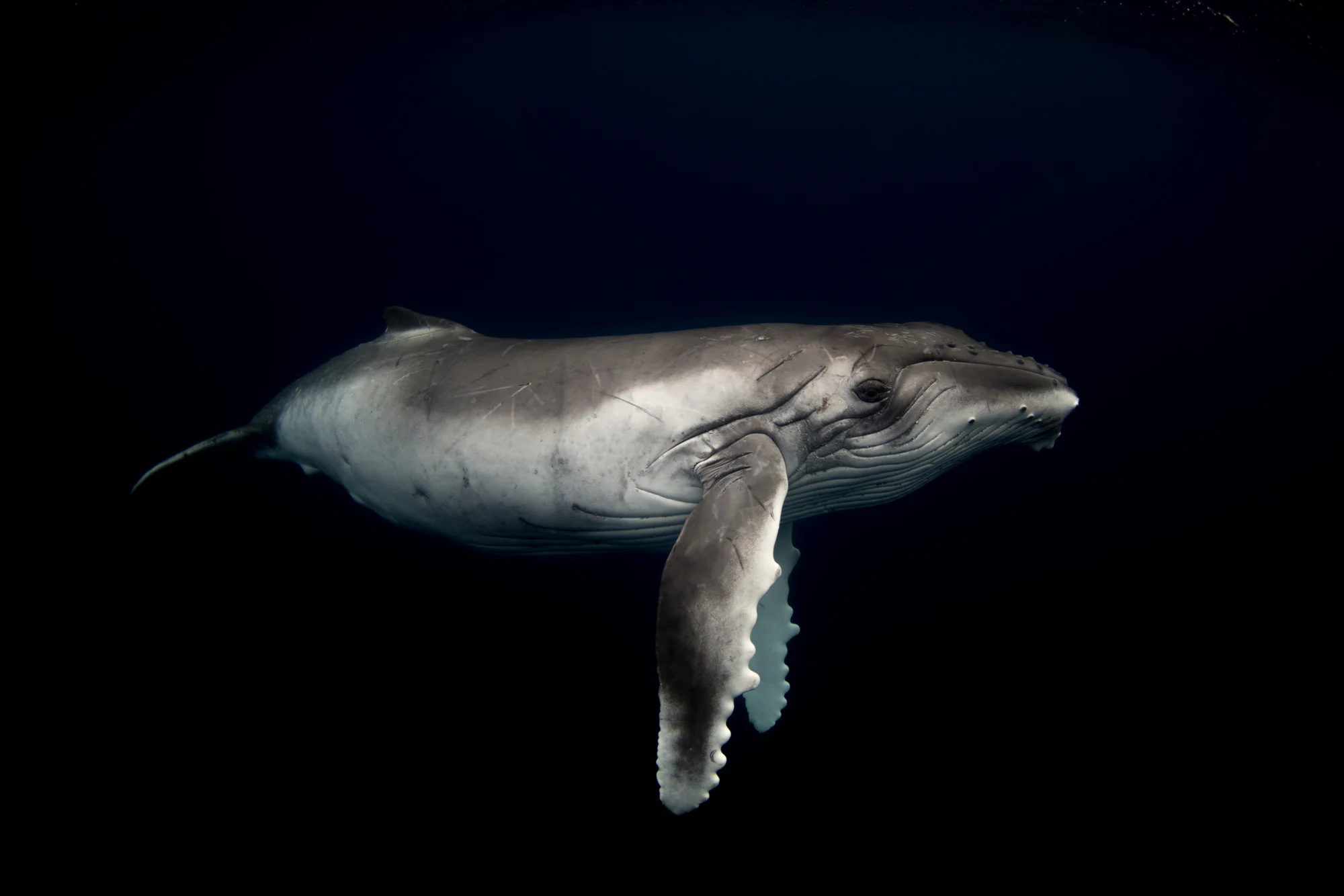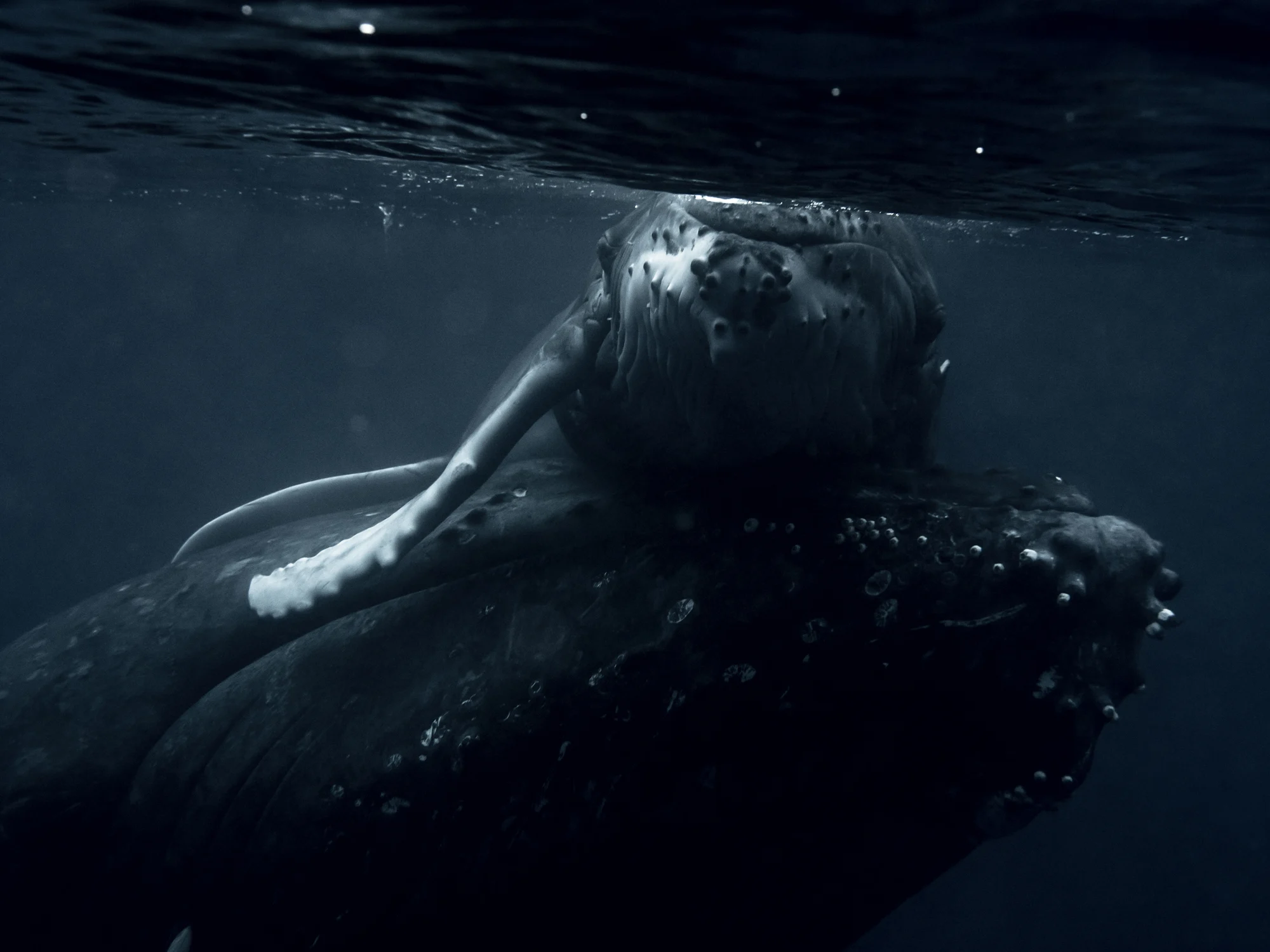

Australian photographer Michaela Skovranova takes “beginner’s luck” to a new level. Her first ever attempt at an underwater photoshoot became Love Scars, a beautiful series taking a closer look at the scars baby humpback whales get when rubbing their bodies against their affectionate mothers. She tells us how she prepared for her first meeting with the whales, and explains her obsession with some of the most complex, sociable animals on the planet.
“The whales know exactly where you are,” the guide shouted to the people on the boat. “Be very still. If they want to they’ll move closer, if they want to move away they’ll leave.” Photographer Michaela Skovranova was one of those on board the boat, on an organized tour specializing in taking people to swim with humpback whales in Tonga. She had only decided to invest in underwater camera equipment just before this trip. She pre-focused her camera, set the shutter to a speed she thought might keep up with the fast-moving whales, and dived in.

You can see them watching you and working out what you are.
“Almost immediately, we had a mother and calf emerge to get oxygen right next to us, and it was just incredible,” Michaela says. “You can see them watching you and working out what you are. They’re obviously hyper-aware of their surroundings.” The black-and-white photo of a whale crashing through the surface of the sea, clouds of air bubbles clinging to its skin, was taken on Michaela’s first time photographing underwater. “We were just in the right position with the right timing. And that’s the thing, we can prepare as much as we like, but it’s really all about chance,” she says.
For the rest of that week, Michaela continued to photograph the humpbacks, focusing on the relationship between mother and calf. “I noticed how incredibly loving they were with each other. They had such a strong bond,” she says. She began to notice the scars that covered the calves, and learned that some are a result of the calf affectionately rubbing against its mother’s body during its infancy. Michaela’s project, Love Scars, takes a closer look at these marks. In human terms we associate scars with pain or injury, but for these humpback whales, you could say that the more scars they have, the closer they were kept by their mothers, and the more affection, love and protection they were given.
Michaela found it fascinating that the mothers were so loving towards their children, knowing that in a year or two they would be separated as the young whales left to fend for themselves as young adults. “They just give all their love and all their attention to that young calf, just so they can get through that process, until they can be on their own,” Michaela says.



The whales also have a unique way of communicating their love to one another. Humpbacks communicate via echolocation: bouncing high-pitched sounds off underwater objects. Their cries and songs are some of the most complex in the animal kingdom, and scientists have been working to track just how advanced their communication might be. They create long, melodic songs with patterns and layers that make them similar to simple human sheet music. Albums have been made that are solely composed of whale songs, and they are often sampled in other music. Songs can be passed down through generations. Different pods in different locations have been found to have totally different songs, which shows their ability to learn and imitate, and experts continue to work to find out what they may be saying to one another.

They give all their love and all their attention to that young calf, until they can be on their own.
Michaela spends a lot of time considering the similarities and differences between our lives and the lives of animals in the wild. When it comes to whales, the love scars are a trait mankind does not share with them, while their complex communication system and the notion of a child being raised to become independent rings true. She does feel like the ease with which the whales allow their children to leave when the time comes is something we can learn from. “Of course we experience anxieties around separation from loved ones, and yet look at these creatures and they just continue with their lives, because they don’t have those built-in fears of being hurt,” she says. “And if we looked at our human lives in a similar way, maybe it would make our journeys a little bit easier.”

